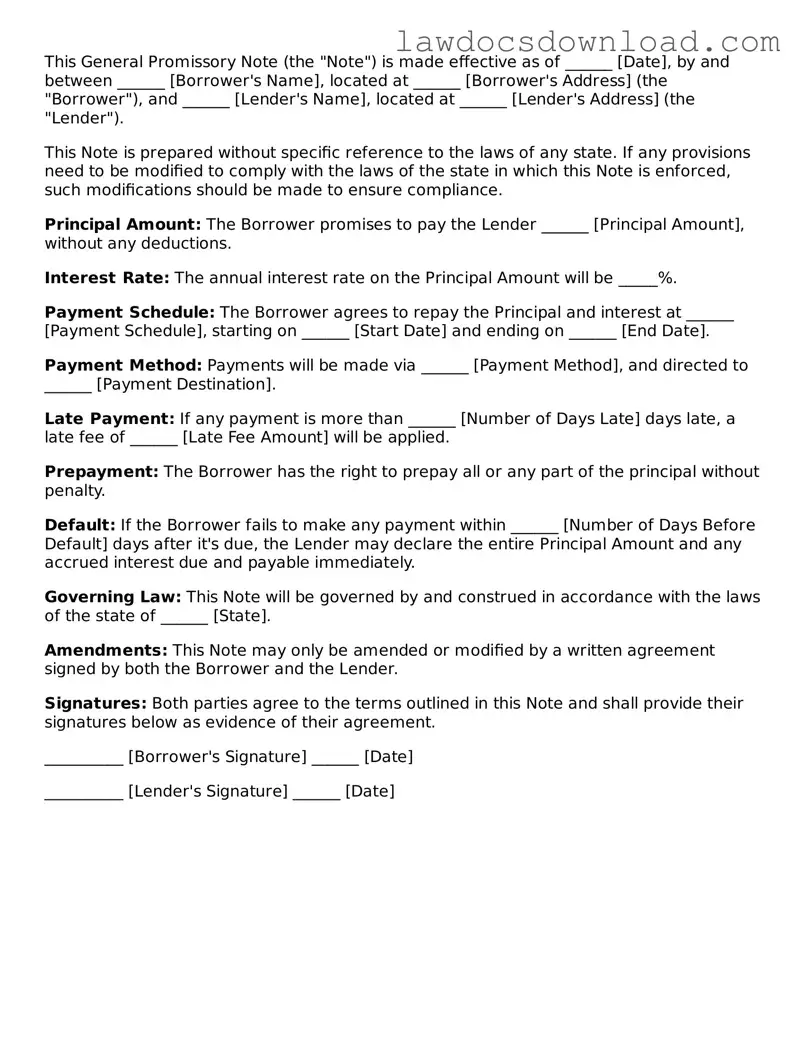This General Promissory Note (the "Note") is made effective as of ______ [Date], by and between ______ [Borrower's Name], located at ______ [Borrower's Address] (the "Borrower"), and ______ [Lender's Name], located at ______ [Lender's Address] (the "Lender").
This Note is prepared without specific reference to the laws of any state. If any provisions need to be modified to comply with the laws of the state in which this Note is enforced, such modifications should be made to ensure compliance.
Principal Amount: The Borrower promises to pay the Lender ______ [Principal Amount], without any deductions.
Interest Rate: The annual interest rate on the Principal Amount will be _____%.
Payment Schedule: The Borrower agrees to repay the Principal and interest at ______ [Payment Schedule], starting on ______ [Start Date] and ending on ______ [End Date].
Payment Method: Payments will be made via ______ [Payment Method], and directed to ______ [Payment Destination].
Late Payment: If any payment is more than ______ [Number of Days Late] days late, a late fee of ______ [Late Fee Amount] will be applied.
Prepayment: The Borrower has the right to prepay all or any part of the principal without penalty.
Default: If the Borrower fails to make any payment within ______ [Number of Days Before Default] days after it's due, the Lender may declare the entire Principal Amount and any accrued interest due and payable immediately.
Governing Law: This Note will be governed by and construed in accordance with the laws of the state of ______ [State].
Amendments: This Note may only be amended or modified by a written agreement signed by both the Borrower and the Lender.
Signatures: Both parties agree to the terms outlined in this Note and shall provide their signatures below as evidence of their agreement.
__________ [Borrower's Signature] ______ [Date]
__________ [Lender's Signature] ______ [Date]
